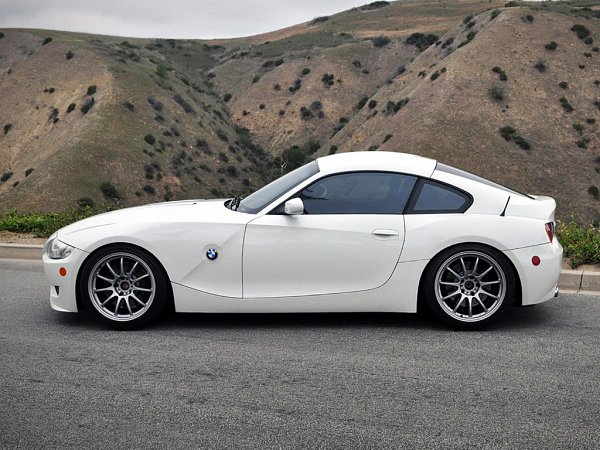This is the fourth generation Lexus GS, but it’s not about to take on the hegemony of Audi, BMW and Mercedes in Europe as there are still no plans for a four-cylinder diesel. There /is/ a new 2.5-litre V6 petrol but, officially, it’s dirtier and less fuel efficient than the headline-grabbing hybrid version, the GS450h. It’s the hybrid we’ve tested here – read on for CAR’s first drive review of the new Lexus GS450h.
So if the Lexus GS450h is Toyota’s latest hybrid, presumably it produces some pretty stellar official figures?
The GS450h features the second generation of Lexus Hybrid Drive, but it’s more evolutionary than revolutionary: the batteries remain nickel-metal hydride (but now stand vertically instead of horizontally to the boon of 60% more boot space), and the 3.5-litre V6 engine is still naturally aspirated (albeit now with direct fuel injection). Combined with the electric motor, the maximum power output of the hybrid system is up versus the old GS450h: 292bhp @ 6400rpm is now 338bhp @ 6000rpm. And yet torque is down: 271lb ft @ 4800rpm has dropped to 254lb ft @ 4600prm.
Officially, thanks to the electric tech, the GS450h achieves 137g/km and 47.9mpg on the combined cycle, which means emissions have been reduced from 179g/km and consumption is cut by 23%. So it’s cleaner and more economical than any petrol 5-series – and the 530d – while the (unchanged) 0-62mph time of 5.9 seconds means it’s on par for pace with the 535i.
How has the new Lexus GS changed inside and out?
The styling is sharper – but you really need the optional F Sport kit (an estimated £2500) to make the GS look mean rather than meek. And besides the beefier bumpers, F Sport trim adds interior upgrades (excellent 16-way adjustable front seats and various trim tidbits), plus revised shock absorbers, stiffer rear suspension bushes, and bigger front brakes. Two-stage Adaptive Variable Suspension is thrown in too, and on F Sport models you can spec Lexus Dynamic Handling (an estimated £1700), effectively a rear-wheel steer system. More of which later…
Refinement and quality levels are high, but the graining of the plastic has that unique Toyota/Lexus ability to instantly date the interior by about a decade and any superiority Lexus once enjoyed over the Germans is slipping away. But it now leads all rivals in one way: the LCD multimedia screen is, at 12.3in, the largest ever fitted to a production car. Controlling it is the second-gen Remote Touch Interface, the Lexus take on iDrive. The rollerball controller no longer acts like a mouse with the cursor flying across the screen as you battle against the oversensitivity; instead each nudge of the RTI left or right or up or down moves the pointer to set positions. Works well, but the rotary dial favoured by the Germans is a slicker solution.
And how does the new Lexus GS drive?
Like all hybrids you start the GS450h and it’s instantly into EV mode. Then there’s that smug smile as you glide away from your parking space and into urban traffic in near silence. Plant your right foot and the petrol engine seamlessly joins the fray; the extra power is instantly obvious, and the electrical assistance means diesel-esque mid-range overtaking ability. Lift, and as long as you’re not asking too much, the V6 shuts down and you coast along on electric power once more. Which is much like the previous Lexus GS450h.
What’s different is a Drive Mode Select dial with Sport S and Sport S+ settings, plus the F Sport’s adaptive dampers and the rear-wheel steering system. Sport S sharpens the throttle, Sport S+ quickens the steering (and adjusts the dampers and the rear-steer settings) and with all four wheels swiveling the GS turns in keenly, feels very nimble, and only on the worst roads and in the stiffest setting does the ride lack a little composure. There’s a little initial deadness to the steering, but while it’s a little light and synthetic, it’s sharper and more incisive than on non-F Sport models – and much better than the old GS.
The new GS is still fast and refined, and now (in full F Sport-spec GS450h guise at least) it’s fun to drive too. Alas the lack of a small diesel and the expense of the hybrid version – lots of kit will be standard but reckon on paying £50k – means it’ll remain a bit-part player, despite potentially having the wherewithal to challenge German domination.
.jpg)
.jpg)

.jpeg)

.jpg)
+M+Coupe+2012+Pictures(1).jpg)

.jpeg)
.jpg)


.jpg)
.jpg)
+M+Coupe+2012+Pictures(1).jpg)

.jpg)
.jpg)
.jpg)





.jpeg)
.jpeg)
.jpeg)
.jpeg)
.jpeg)
.jpeg)
.jpeg)
.jpeg)
.jpeg)
.jpg)
.jpgVencer+Sarthe+2012+Pictures(8).jpg)
.jpg)
.jpg)
.jpg)
.jpg)
.jpg)
.jpg)








































.jpg)
.jpg)
.jpg)